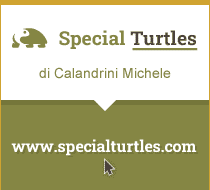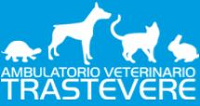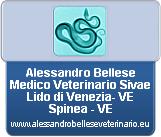Testudo hermanni is widespread in Europe. It is divided into two subspecies, Testudo hermanni hermanni (Thh) and Testudo hermanni boettgeri (Thb). The first one is mostly widespread in Western Europe (Spain, France and Italy), the second one in Eastern Europe (countries of the former Yugoslavia, Albania, Greece, Bulgaria, Romania and western Turkey).
Testudo hermanni grazing
- Testudo hermanni hercegovinensis, widespread in coastal areas of Croatia, Serbia and Dalmatia;
- Testudo hermanni 'peloponnesica', spread around Sparta.
The typical habitat of Testudo hermanni is the Mediterranean maquis, garrigue, forests of oaks and holm. Generally it is found in the Mediterranean coastal areas, but the distribution range also consists of hills and low mountains.
Area di distribuzione di Testudo hermanni
Area rossa - Testudo hermanni hermanni
Area verde - Testudo hermanni boettgeri
Area blu - Testudo hermanni hercegovinensis
Area viola - Testudo hermanni 'peloponnesica'
Classification
Kingdom: Animalia
Phylum: Chordata
Class: Reptilia
Order: Testudines
Suborder: Cryptodira
Superfamily: Testudinoidea
Family: Testudinidae
Genre: Testudo
Species: Testudo hermanni
Physical features
Some physical features are common to both Thb and Thh subspecies: one of the distinctive features of Testudo hermanni is the tail, ending in a horny case, in both genders: males and females. The carapace is oval, moderately convex, dome-shaped and has, as a color, a olive-yellow with black areas. There is always a small and tight nuchal scute and the overcaudal scute is normally divided, although some individuals have the atypical scute attached.
Divided overcaudal scute
Other physical characteristics vary according to the subspecies, so it will be described separately: the adult Thh reaches a maximum size of about 5,91 inches, if male, and about 7,49 inches, if female. The maximum size depends on the strain as much as on the belonging areal. The plastron has some distinctive features: the first is it is yellow-brown and it is marked by the presence of two black uniform, well-defined bands ; in addition, the pectoral suture is shorter than the femoral one. The carapace usually has, as a distinctive feature, a black spot in the shape of a keyhole on the fifth spinal scute.
Testudo hermanni hermanni
Testudo hermanni boettgeri
Another typical feature of this subspecies, although it is not present in all the specimens, is the presence of a yellow spot in the sub-occipital area, located on the cheek.
Yellow cheek in Testudo hermanni hermanni
The adult Thb reaches, instead, a larger maximum size: males can reach 7,5 inches, females up to 9,8-11 inches. The plastron is colored much more, it is nuanced and less defined than the Thh and the pectoral suture is usually wider than the femoral (or at most equal). The carapace has a light color with the areolas of the scutes brownish or black, usually duller than Thh.
The T.h. hercegovinensis is characterized by the absence of the inguinal scale and it is very similar to the Thb, with the exception of the coloration of the plastron, similar to that of Thh, and the maximum size reached, about 6,7 inches for males and 7,5 inches for females.
The T.h. 'peloponnesica' is characterized by a very small size and a dark color of the carapace and plastron.
Sexual dimorphism
Sexual dimorphism in this species is quite obvious: the males are smaller and have a more concave plastron. The tail of the male is longer and larger and has a horny spur way more developed. The cloacal opening is placed farther from the base of the tail than in the female, and the angle formed by the anal scutes is obtuse. The overcaudal scute in the male is more concave, being more bent towards the tail.
Females reach larger sizes, have a flat plastron, have a short tail and the cloacal opening is placed near the base. The angle of the anal scutes is much narrower than the males. The overcaudal scute is in line with the rest of the carapace.
Female of Testudo hermanni hermanni
Male of Testudo hermanni hermanni
The gender of Th is not generally distinguishable with sufficient certainty before the three or four years of age. It becomes possible to distinguish the sexes analyzing the rate of growth of the animal. For the distinction of sex of samples not yet fully mature, you may refer to certain characteristics that develop earlier than others: normally, one of the most significant for this purpose is the angle formed by the anal scutes, more obtuse in the specimens males than females.
Feeding
Testudo hermanni is a purely herbivorous tortoise, feeding mainly of herbs. It’s better to vary the herbs of the field frequently to be dispensed, preferring those with a ratio of phosphorus / calcium more skewed in favor of the latter. In case of unavailability of the herbs of the field, it is possible to dispense those vegetables you can buy such as chicory, radicchio, endive, escarole, but they must be previously well washed. It is not advisable lettuce because, although it is very appreciated by turtles, it is very low in fiber and nutrients.
Testudo hermanni boettgeri grazing
A good practice is constituted by providing, for example once a week, field herbs dried in the sun or hay, as rich in fibers, which are essential for a proper growth of the turtle.
Occasionally you can provide well-ripe fruit, making sure it does not constitute more than 10% of the overall diet. You can provide apples, pears, figs, melon, strawberries, cherries, blackberries, prickly pears. Avoid, instead, citrus fruits, kiwi and bananas. Within the limits of the 10% previously mentioned, it is possible to dispense some vegetables, such as ripe tomatoes.
Testudo hermanni hermanni eating a cherry
In nature, Testudo hermanni can occasionally eat snails, carrionof small animals and feces, especially in dry periods when food is scarce. In captive conditions, in which subjects are in the great majority of cases, overfed, it is absolutely not advisable to provide any food of animal origin.
Categorically to avoid are milk, dairy products and cheeses, as detrimental to the health of the turtles, which do not possess the necessary enzymes to metabolize the milk proteins. The ingestion of these foods can be the cause of intestinal fermentation that could even be fatal to the turtles.
You must always leave an accessible saucer with clean water to let them drink.
In order to ensure the proper intake of calcium, it is important to provide cuttlefish bone, which must be whole and not crumbled, so that the turtles can have the possibility of filing their beak.
An excessive or inadequate diet may involve an incorrect formation of the carapace, such as pyramiding, which is not morphologically planned in this species, or a not sufficiently calcified. These factors, which apparently does not seem to lead to immediate problems, can lead over time to diseases of the liver and other internal organs, limiting the life expectancy that, under conditions of a proper breeding, can exceed the century.
Breeding
Testudo hermanni, as well as other native species, requires an accommodation outdoors. The ideal environment consists of a large fenced area reached by sunlight from the early hours of the morning and provided with shaded areas in which they can find shelter during the hottest hours of the day. It is also necessary to make one or more shelters where the turtle can rest during the night or the cooler days. It is good practice that the shelters are slightly raised, in order to avoid flooding and excessive moisture. To ensure better thermal insulation of the shelter, you can put inside a dry leaves and soil substrate.
The ability to benefit from the sun's rays, as much as the fact they can do movement and graze outside are extremely important for a proper breeding. In the enclosure there must be, therefore, grazing areas in which the turtle can find wild herbs needed to feed themselves.
Another important feature is the fence: it must not allow the animal to look through it and it should not have footholds which may serve to climb the fence itself. Turtles are very curious animals and explorers, so that, in the absence of these proper precautions, they will constantly try to go beyond the fence.
Testudo hermanni, being a native species, makes hibernation. At latitudes of peninsular Italy it goes into hibernation from November to April. In northern areas the hibernation period may anticipate of a month, because of the colder weather.
Hibernation is a very important phase of the annual lifecycle of the animal, such as the reproductive cycle. The hibernation can be spent outside, in appropriate shelters in which the animal has the possibility of silt up to escape the climatic rigors of the coldest winter days.
Testudo hermanni hermanni taking cover under some leaves, preparing for hibernation
During hibernation, it is also important to protect the animals from possible attacks by rodents or other predators. Ideal temperatures for hibernation range from 39° to 50° F. Lower temperatures than 35° F are potentially dangerous; higher temperatures than 50° F may increase too much the metabolism of the animal, leading to an excessive consumption of resources, accumulated in warm weather.
Sometimes it is preferred to let turtles spend the hibernation in a controlled mode by placing turtles in a wooden box, filled with soil and leaves, to be placed in a special room (such as a basement), ensuring the ideal temperatures range.
When turtles awake from hibernation, it is very important to let them hydrate, leaving available water to drink. This aspect is particularly important for the young specimens.
In the case of health problems assessed by a veterinarian, you may need to avoid that the turtle can hibernate. In this case it will be necessary to prepare an indoor terrarium, whose dimensions are a function of the size and the number of the present animals, and let them spend the coolest months awaken in there. The terrarium should ensure a daytime temperature of 78° F in the hot zone and 68-71° F in the cool area with a night setback up to 64-71° F. The correct temperatures can be guaranteed by an opaque spot bulb during the day and a ceramic bulb at night, controlled by a thermostat sufficiently sensitive.
Exposure to ultraviolet rays should be guaranteed by a UVA / UVB rays, properly controlled by a timer that will ensure consistency with the ignition in the photoperiod.
The bottom of the terrarium can be achieved using normal field of soil mixed with peat moss.
The accommodation in a indoor terrarium, even if properly prepared, is to be considered only a temporary condition of breeding, because in the long run does not guarantee the correct living conditions for this species, which needs to be brought outdoors for any period of the year.
Mating and reproduction
Sexual maturity in captivity for Th is usually achieved earlier than in specimens in a state of freedom. In captivity, males may reach sexual maturity, since a length of 3,1-3,5 cm, females at a length of 4,7-5,1 inches.
The breeding season lasts for the entire period in which the turtles are not hibernating, although the pair are intensified in the spring and late summer. The male is very aggressive and persistently pursues the female, biting her head and feet, by stimulating the spur horny tail, and repeatedly tries mating fitting on the back of the female. During mating and in the early stages of courtship, the male opens his mouth and emits characteristic sounds, audible even to several tens of feet away. In coupling the male is rather aggressive and violent and can therefore cause injury to the female. For this reason, in captivity, it is appropriate to maintain one male and more than one female, indicatively in a relation of one to three or one to four. Moreover, in cases in which the male is particularly aggressive, it is appropriate to separate it from the female after mating, to enable it to lay. After mating, the female retains the sperm inside their body in a special organ, which may give her the opportunity to lay fertile eggs up to 4 years after mating.
The female can make multiple statements for each season, the depositions are generally two, one in May and one in June. The young turtles hatch between August and September, but, in the event that the eggs do not hatch before the arrival of the cold season , the young are able to hibernate inside the egg: they will hatch in the next spring.
Deposition site
The number of eggs for each deposition depends on the subspecies: the Thh typically lay 3 eggs and small turtles weigh 9-10g, Thb indeed lay 5 to 8 eggs and small turtles weigh 12-14 g.
When females are close to the deposition, it is important to provide cuttlefish bone with calcium and vitamins. To facilitate the deposition, you must create a suitable environment: the female often look up for soft and loose soil to lay the eggs, which has a certain slope to prevent the eggs can be submerged in water in case of rain, the female also prefer areas to feel protected and sheltered.
In the incubator eggs can be incubated between 86° and 91,4° F. The sex of turtles depends on the temperature of incubation: above 88,7 ° F it has a greater number of females, while below a prevalence of males. Temperatures above 91,4° F may cause malformations, and sometimes they cause the death of the fetus inside the egg. The humidity inside the incubator should be around 70-80%. The hatching-time is about 50-80 days, depending on the conditions of incubation. It is very important to remember that the eggs removed from the ground to be incubated should not be shaken or inverted. It is useful, once discovered, to draw a small mark on the shell gently with a pencil, to recognize the "direction" of the egg.
Eggs in a container to put inside an incubator
Candling of an egg deposed by a Testudo hermanni hermanni
Breeding and care of baby specimens
The baby specimens, after the absorption of the yolk sac and the "closure" of the plastron, can be transferred in a outdoor terrarium built for them. It is very important that the terrarium is protected from predators such as mice and birds, for example with a fine wire mesh narrow, which guarantees protection from attacks from below and from above.
Particular attention should be devoted to the preparation of the terrarium where babies live, avoiding the dangers to which young individuals are more prone (tipping, drowning in the saucer with water) and ensuring the right level of humidity, exposure to sunlight , the availability of shade and shelter.
Notes
Testudo hermanni is a suitable species for those who want to experience in breeding turtles.
Legislation
Testudo hermanni is included in Appendix II of CITES and in Appendix A of Regulation 1332/2005 of the European Community.
************************************************** ***************
Originally written by: Rughis
Translated by: Ugo
 Benvenuto su Tartarugando, il forum tematico specializzato nell'allevamento di tartarughe e di altri rettili.
Benvenuto su Tartarugando, il forum tematico specializzato nell'allevamento di tartarughe e di altri rettili.






 Elenco delle sezioni
Elenco delle sezioni Elenco delle Categorie
Elenco delle Categorie Nuvola Tag
Nuvola Tag



 Articoli recenti
Articoli recenti